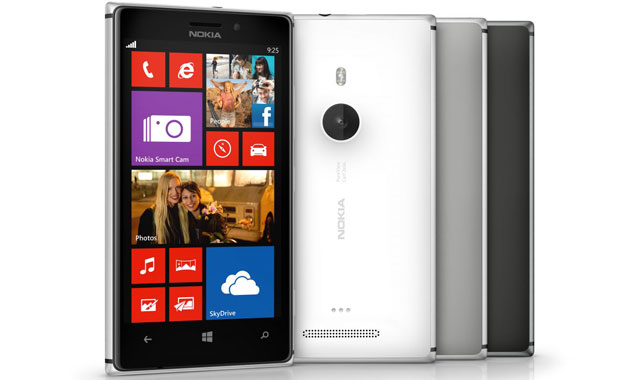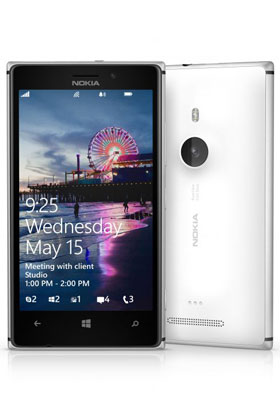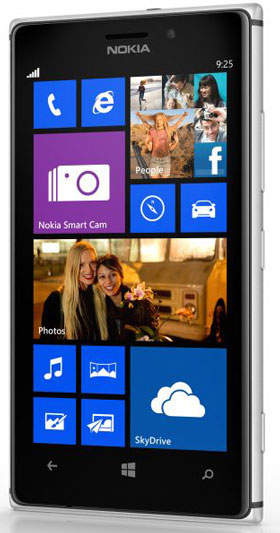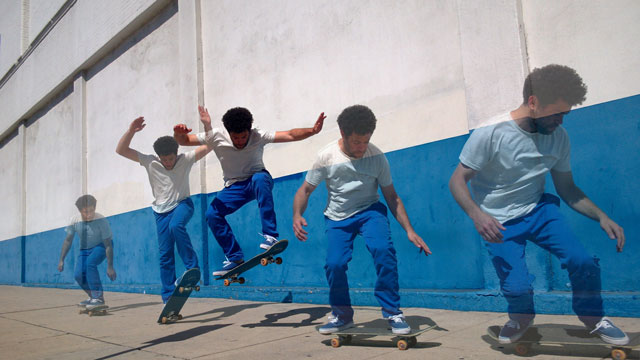
Last November, when we reviewed Nokia’s then-flagship Windows Phone device, the Lumia 920, we described it as a flawed masterpiece: a great piece of hardware let down by a few key design mistakes.
Our main issue with the 920 was its heft. It was too thick and, at 185g, quite a bit heavier than the phones it had to compete against.
With the Lumia 925, Nokia has perfected the offering. Although we’re yet to have the opportunity to use Nokia’s upcoming Lumia 1020, with its 41-megapixel PureView camera, the 925 is without doubt the best Windows Phone that’s crossed our review desk so far.
To create the 925, Nokia put the 920 on a crash diet. It’s slimmed down from 10,7mm thick to just 8,5mm and its weight has fallen from 185g to a much more manageable 139g, no doubt due to the decision to remove the 920’s wireless charging coils.
A wireless charging plate and cover are now available as an optional extra, although in South Africa these come bundled with the phone if you get it from one of the network operators.
The new phone retains the same screen size as its predecessor – 4,5 inches – but replaces the LCD panel with a vivid Amoled capacitive touch display with a 1 280×786-pixel resolution and a pixel density of 332ppi.The screen is bright and gorgeous to look at and it’s tough, too, thanks to Corning Gorilla Glass 2.
The phone looks great, with an aluminium band around its outer edges adding to the sense that this is a premium device. Also, whereas the 920 came in five colours, the new model comes in three: the more garish yellow and red options have been dropped, leaving the more serious-looking black, white and grey.
 Internally, not a lot has changed over the 920. Both devices support a range of 4G/LTE frequencies – Telkom Mobile’s 2,3GHz is not among them – and both have the same non-user-replaceable 2 000mAh battery. They also both have the same support for Wi-Fi, up to the speedy “n” variant and both use the same Qualcomm Snapdragon system chip and 1,5GHz dual-core Krait processor. That may not sound speedy compared to the quad-core or even eight-way chips found in the latest models from manufacturers that use Android, but Windows Phone 8 feels snappy and fluid, even though the 925 also only has 1GB of RAM.
Internally, not a lot has changed over the 920. Both devices support a range of 4G/LTE frequencies – Telkom Mobile’s 2,3GHz is not among them – and both have the same non-user-replaceable 2 000mAh battery. They also both have the same support for Wi-Fi, up to the speedy “n” variant and both use the same Qualcomm Snapdragon system chip and 1,5GHz dual-core Krait processor. That may not sound speedy compared to the quad-core or even eight-way chips found in the latest models from manufacturers that use Android, but Windows Phone 8 feels snappy and fluid, even though the 925 also only has 1GB of RAM.
A few elements of the rear-facing camera have been tweaked, however. As it did with the 920, Nokia’s touting the 925’s camera as one of its biggest selling points.
Featuring a Carl Zeiss lens, the primary camera offers 8,7 megapixels and a dual-LED flash. Nokia’s PureView technology promises blur-free images due to built-in optical image stabilisation and improved low-light performance.
The 920 produced excellent images in low light and the 925 does just as well — not surprising given it’s the same sensor, albeit with an extra lens element.
Shake reduction is also excellent on account of the entire optical construction being cushioned by tiny springs. The result is sharper stills, even in low light, and impressively wobble-free video.
 The bottom of the right side of the 925 includes a dedicated, two-step camera button that launches the camera software from any app, or the lock screen, and doubles as a shutter release. A half press makes the camera focus and a full-press releases the shutter and captures an image.
The bottom of the right side of the 925 includes a dedicated, two-step camera button that launches the camera software from any app, or the lock screen, and doubles as a shutter release. A half press makes the camera focus and a full-press releases the shutter and captures an image.
Users can also take photos by tapping anywhere on the display, after which the camera focuses on that area and releases the shutter immediately.
On-screen options include buttons for toggling flash modes, switching between the rear- and front-facing cameras, switching to video mode and switching “lenses”.
The lenses include Bing Vision, a QR code and barcode scanner and OCR (optical character recognition), and Nokia Pro Cam, which offers users on-screen buttons for popular settings rather than hiding them in a settings menu. Pro Cam offers novel features like exposure bracketing and a shutter delay for those using the phone with a tripod.
But the real star of the lens line-up is Nokia’s Smart Cam, which captures a series of images in quick succession and then allows you to pick the best features from each, whether that means creating an action shot, removing unwanted objects or movement from an image or picking the perfect facial expression from the series. You can leave Smart Cam on by default, but it does mean a longer wait while images process.
Finally, there’s Nokia’s Cinematograph, which uses the Smart Cam’s ability to capture multiple images rapidly to create stills with moving elements — a hemline flapping in the breeze, for example. It’s gimmicky and results in severely compressed images, but it’s good to see Nokia experimenting with the software options such high-end hardware enables.
Nokia’s also included the obligatory secondary camera and has decided not to pander to “generation selfie” because the 925’s front-facing camera remains the 1,3-megapixel shooter found on last year’s 920.
With the 925, Nokia reminds us that it makes superb cameras, and though it might not have the pixel count of the latest Samsung Galaxy, the 925 can hold its own.
On the software front, the 925 includes the all the extra goodies that make the Lumia line-up more compelling than Windows Phone devices offered by other manufacturers.

These apps include the excellent Here Drive+ app that offers live traffic data and offline turn-by-turn navigation (for 95 countries) and the Nokia Music app, which streams music of your choosing, with up to six song skips per hour. For a very affordable R25/month, users can subscribe to Music+, which offers unlimited track skips.
On the downside, the Windows Phone Store still lacks some of the key applications available for Android and iOS. We’d dearly love to see Google port Chrome — our Web browser of choice — to Windows Phone, like it has to iOS. And Instagram continues to be a gaping hole in the app line-up. But the situation is improving slowly but steadily as more developers turn to the platform.
The 925 comes with 16GB of storage on most networks. There is a 32GB model, but this is only available on Vodafone-owned networks — Vodacom is included in the list. Given that the phone doesn’t support SD cards, it’s a pity that the 32GB model isn’t available more widely.
The 925 has a recommended retail price of R8 999, though you could probably pick one up for as little as R7 150 (without the wireless charging cover and plate) if you shop around. It’s also available subsidised on contract from the major operators.
If you’re looking for the latest and greatest Windows Phone device, with a great camera, the 925 could very well be the smartphone you’ve been waiting for. Of course, the Lumia 1020 is on its way and if you simply must have the best camera on the market, then it may be wise to exercise a little patience. — (c) 2013 NewsCentral Media

